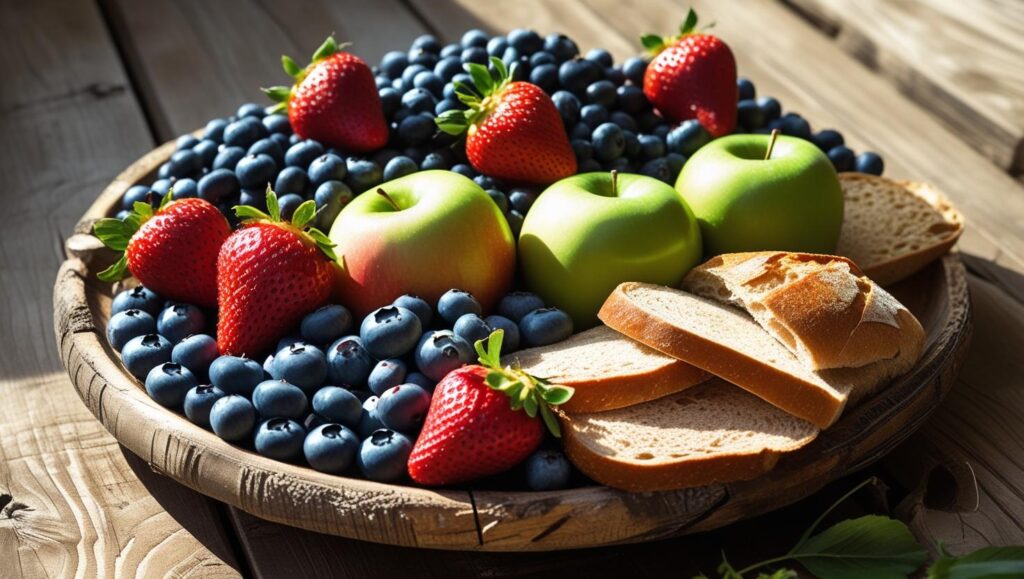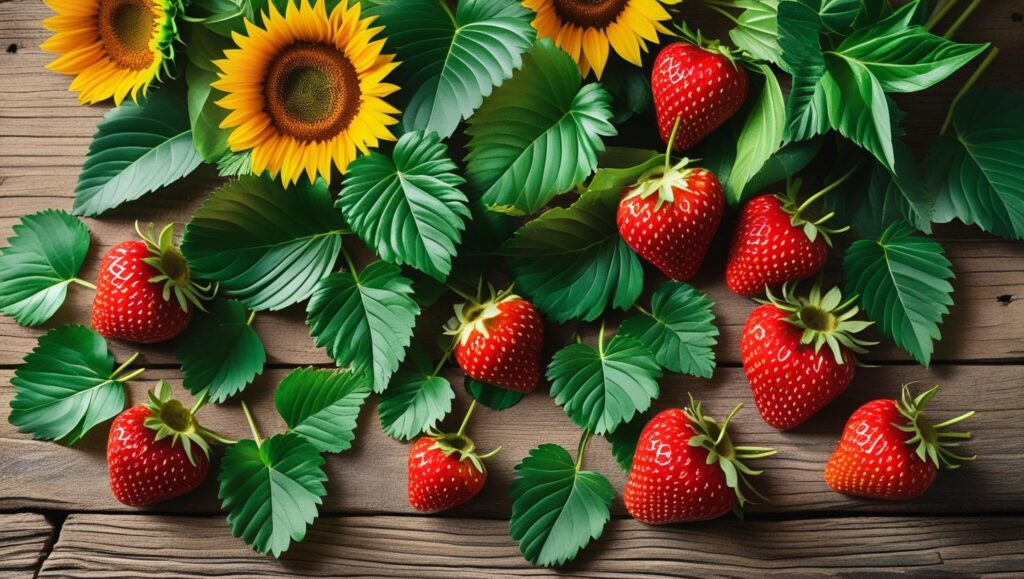
I used to think I was terrible at eating healthy. I’d forget lunch entirely, then find myself desperately seeking that dopamine boost from whatever sweet snack was nearby. I’d start Monday with grand meal prep plans and be ordering takeout by Wednesday, feeling like a complete failure.
Sound familiar?
If you have ADHD, you know that our relationship with food can be… complicated. Between executive function challenges, dopamine-seeking behaviors, and decision fatigue, trying to eat well can feel like just another thing we’re failing at.
But here’s what I’ve learned through my own messy journey: clean eating with ADHD isn’t about perfection. It’s about finding simple systems that work with our brains, not against them.
The 80/20 Rule Changed Everything for Me
The biggest shift in my relationship with food came when I stopped trying to eat “perfectly” and embraced the 80/20 approach instead. This means making nourishing choices about 80% of the time and giving myself complete freedom for the other 20%.
This took so much pressure off. I could have pizza with my family on Friday night without spiraling into guilt. I could grab fast food when life got chaotic without feeling like I’d “ruined” everything. The key was understanding that these weren’t daily occurrences—they were the 20% that balanced out the 80% of times I was choosing foods that made me feel good.
For my ADHD brain, this approach was revolutionary because it eliminated the all-or-nothing thinking that used to derail me constantly. One imperfect meal didn’t mean I had to abandon all my healthy habits. I could just return to my usual choices at the next meal.

The Magic of Eating the Same Thing Every Day
I know this might sound boring, but eating the same breakfast every single day has been another complete game-changer for me. I have oatmeal with diced apples, all-natural maple syrup, and cinnamon and brazil nuts almost every morning, and it’s honestly freed up so much mental space.
Here’s why this works so well for my ADHD:
- Zero decision fatigue: I never have to think about what to have for breakfast
- Guaranteed nutrition: I know I’m starting my day with fiber, complex carbs, and vitamins
- One less thing to mess up: Even on my most scattered days, breakfast is handled
The key is choosing something that hits all the nutritional bases: protein, healthy fats, fiber, and nutrients that keep you satisfied. My oatmeal combo gives me sustained energy without the crash, and I add Brazil nuts beforehand for protein and healthy fats.
If you’re interested in learning more about how I’ve simplified my entire approach to eating with ADHD, I’ve put together a comprehensive guide that walks through all my practical strategies, from batch cooking to ADHD-friendly food systems. It’s helped me move from constant food stress to actually enjoying nourishing my body. Find the guide right here Clean & Balanced Eating With ADHD.
Building Meals That Actually Satisfy My ADHD Brain
When I finally understood that my ADHD brain needs meals with protein, fat, and fiber to feel satisfied, everything clicked. These three components work together to:
- Stabilize blood sugar (goodbye afternoon crashes!)
- Keep me full longer (so I am not constantly seeking snacks)
- Support steady dopamine levels (less seeking that quick sugar high)
My go-to dinner formula is incredibly simple but hits all these marks: rice (fiber) + chickpeas (protein) + broccoli (nutrients and fiber) + olive oil or coconut oil (healthy fats). Sometimes I’ll add an egg on top or some leftover chicken, but the foundation stays the same.
The beauty of this approach is that it’s flexible. You can use the same formula with different ingredients:
- Quinoa + black beans + sweet potato + avocado
- Rice + lentils + spinach + nuts
- Pasta + chickpeas + vegetables + olive oil
Once you have a few combinations that work, you never have to think about what to make for dinner again.
Why Simple Systems Beat Perfect Meal Plans Every Time
Traditional meal planning advice assumes a level of executive function that I simply don’t have consistently. Instead of fighting against my ADHD brain, I’ve learned to work with it by creating ridiculously simple systems:
Make one meal completely automatic: Choose breakfast, lunch, or dinner to eat the same way most days. This eliminates decision fatigue and ensures you get consistent nutrition.
Batch cook one thing per week: Don’t try to meal prep everything. Just cook one big pot of rice, beans, or roasted vegetables that you can use throughout the week.
Keep snacks visible and ready: ADHD brains are very “out of sight, out of mind.” I put healthy snacks at eye level in my cupboard, or I won’t eat them when I’m scattered.
These aren’t rules I have to follow perfectly—they’re fallbacks for when my executive function is low or life gets chaotic.
The Real Secret: Progress, Not Perfection
Here’s the truth that took me way too long to learn: I don’t eat “perfectly”. Sometimes I eat ice cream for dinner. Sometimes I skip meals because I get hyperfocused. Sometimes I eat way too many cookies at a party.
And that’s completely okay.
The magic isn’t in eating perfectly all the time—it’s in having simple, nourishing habits to return to and giving myself a little grace. When life gets messy or I make choices I don’t feel great about, I don’t have to start over from scratch. I just come back to my basic systems and familiar meals.
This is especially important for those of us with ADHD because we’re already prone to negative self-talk. Adding food guilt on top of everything else is just counterproductive. Grace and flexibility have to be built into any eating approach that’s going to work long-term.
In my detailed guide about clean eating with ADHD, I share the complete framework I use for building this kind of sustainable, guilt-free relationship with food—including how to handle the emotional eating that often comes with ADHD overwhelm. However, I am not a professional dietitian or doctor, I am just sharing the things that work for me on my journey.
Your Journey Will Look Different
What I’ve shared here works for me, but your version might look completely different. Maybe you hate oatmeal but love smoothies. Maybe dinner is easier for you to keep consistent than breakfast. Maybe you have different dietary needs or food sensitivities.
That’s not just okay—it’s exactly how it should be. The principles are what matter: simplicity, consistency built around nutrition, and lots of self-compassion. How you apply those principles should fit your life, your preferences, and your unique ADHD brain.
The goal isn’t to follow my exact approach, but to find your own sustainable way of nourishing yourself that reduces stress instead of adding to it. You deserve to feel good in your body and have energy for the things that matter to you.
If you’re ready to dive deeper into creating your own ADHD-friendly eating approach, my complete Clean & Balanced Eating with ADHD Guide walks through everything I’ve learned about making healthy eating actually sustainable with our beautifully chaotic brains. It’s full of practical systems, real-life examples, and the kind of gentle encouragement we all need on this journey.
Start small, be patient with yourself, and remember: you’re not broken, you’re not lazy, and you don’t lack willpower. Your brain just works differently, and you deserve an approach to food that works with you, not against you.
If you would like some continued encouragement along your journey go ahead and click this link Calming Your Mind Journal, and get your journal freebie by subscribing to The Green Kaleidoscopes Newsletter!
I’m not a doctor, therapist, or dietitian—I’m just a mom with ADHD sharing what’s worked for me. If you’re struggling with disordered eating or other health concerns, please reach out to a qualified professional. What works for me might not work for you, and that’s okay.